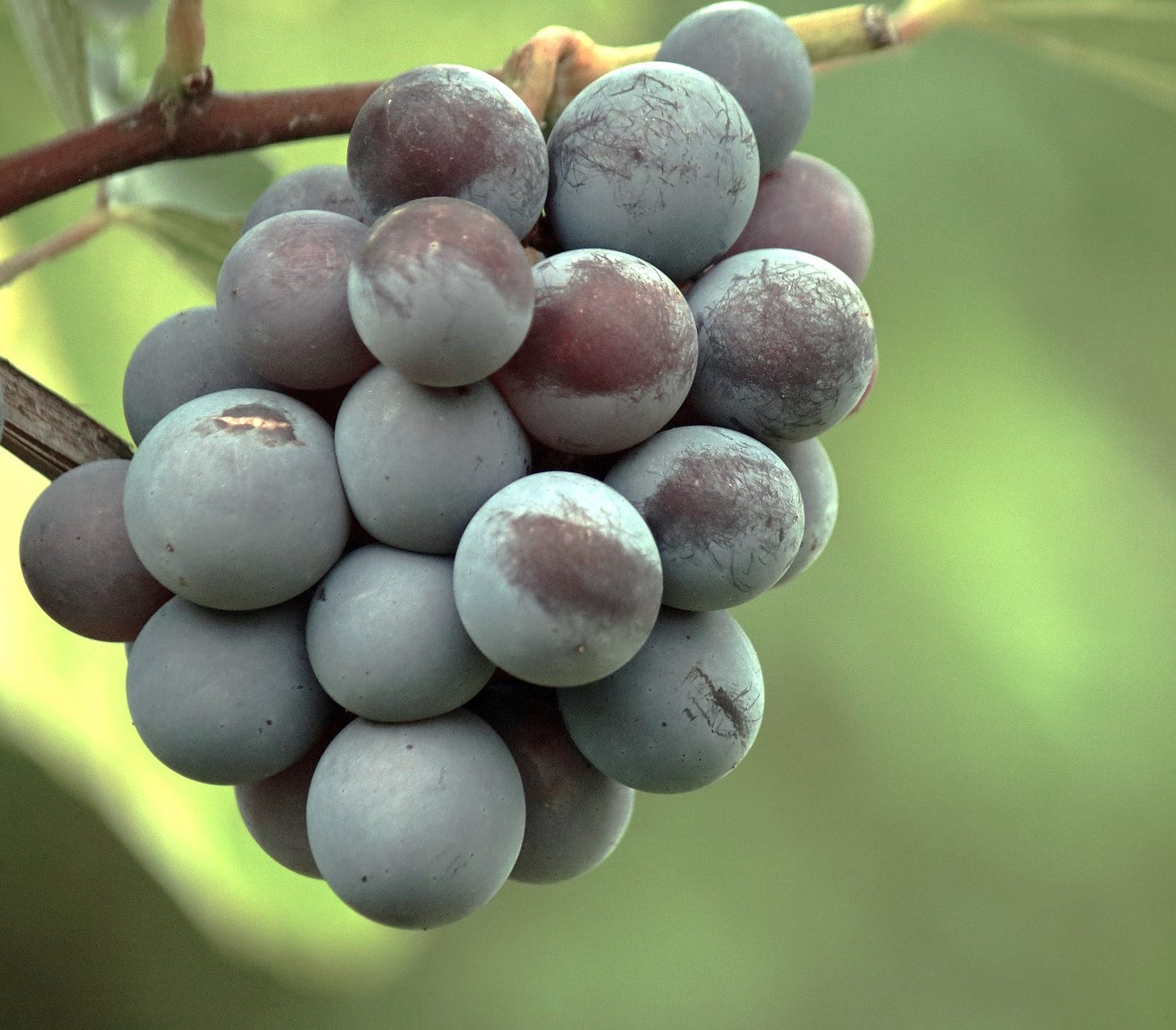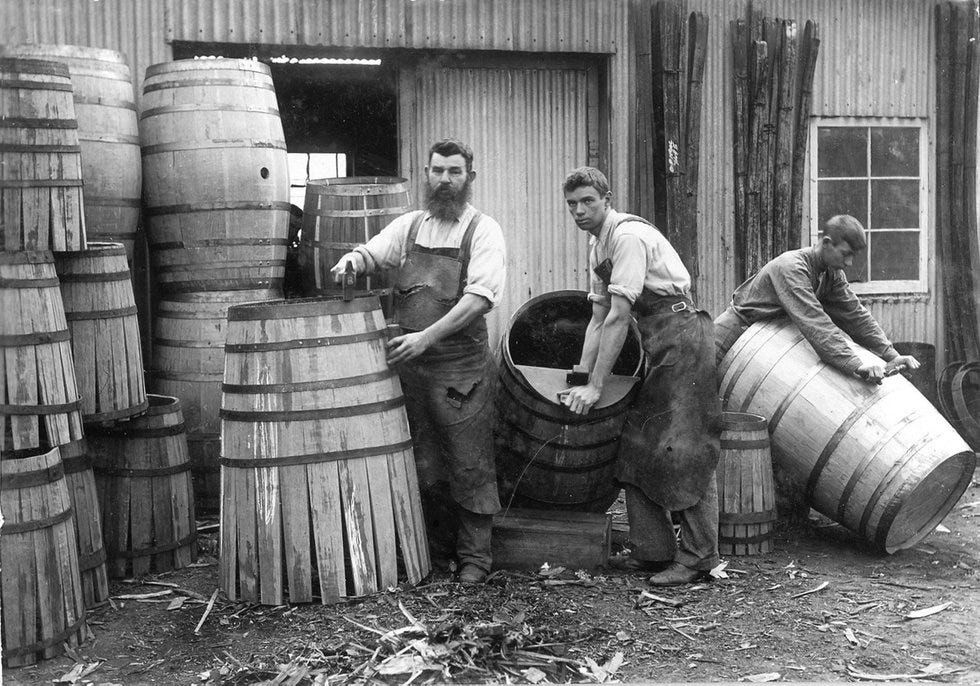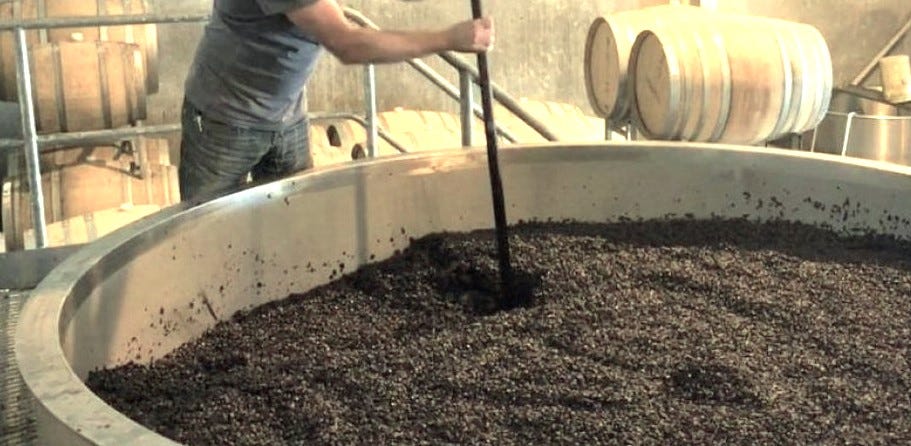Dr. Winestain's Guide to Tannins
Question sent in by Charlotte Maraka
Dear Dr. Winestain,
I've always been curious about tannins in wine. What exactly are tannins, and how do they affect the flavor and texture of wine? I've heard terms like “silky,” “coarse,” “bouncy” and “chewy” used to describe them, but I'm not quite sure what they mean. Could you explain the different types of tannins and how they influence a wine's taste?
Dr. Winestain: Well, well Charlotte, we meet again. Great question. When it comes to understanding the complexity of wine, tannins hold an important, albeit often misunderstood position.
Tannins are essential for structure and longevity, like bones are to animals. After all, without bones we would be a jelly mess. Tannins are a big part of most of our favorite reds and sometimes white wines.
The use of tannins in winemaking stretches back millennia. Ancient winemakers might not have known the chemistry and know-who, but they understood the effects of different winemaking techniques had on the tannic structures of wines.
Let’s delve into the world of tannins, explore their origins, their role in winemaking and the subtle art of their management.
So, what exactly are Tannins? Actually, they are polyphenolic compounds. They add a bit of bitterness or dryness to wine, which you can feel on your tongue. That distinctive dry, puckering sensation in the mouth, often akin to the feeling of drinking strong black tea. Beyond sensation, they are pivotal in providing the framework upon which a wine can age and develop over time.
What does Polyphenolic Compound mean? Well, it’s a naturally occurring chemical substance found in plants and known for its antioxidant properties.
Why are they important in winemaking? They contribute to the flavor, color, and potential health benefits as well as being aromatic compounds.
What on earth is an aromatic compound? It is a type of chemical found in many natural and synthetic substances that are responsible for giving them their distinctive smells. These compounds are often found in foods, flowers, essential oils, and perfumes. They get their name from "aroma," which means a noticeable and usually pleasant smell.
In simpler terms, when you smell something like a rose or a lemon, what you're actually detecting are the aromatic compounds that these objects release into the air. These compounds are made up of molecules structured in such a way that they can easily evaporate at room temperature, making it possible for them to travel through the air and into your nose, where they're detected as smells by our minds, using our memories of past experiences.
Ok, so where are Tannins found for a winemaker? They are found in the plant, so grape skins, seeds, and stems but they are also imparted from wood.
Wait, there are Plant Tannins and Wood Tannins? Yes, that’s right…let’s look a little at the differences.
Plant Tannins
Firstly, plant tannins are crucial in providing color, structure, and the potential for aging. They are extracted during the maceration process - where the juice is in contact with these grape components - typically during and after fermentation. The nature of these tannins is greatly influenced by grape type, viticultural practices & specific growing conditions of the vintage.
Wood Tannins
Introduced during aging in wooden barrels - these tannins impart a smoother, rounder mouthfeel and contribute to the vanilla, spice or smoky flavors that we can taste in many wines. Bear in mind that Wood Tannins can also be passed to the wine via staves, woodchips or powder additive.
The extraction of oak tannins depends on factors such as the type of oak, the age of the barrel, and the toast level of the barrel interior. New barrels will impart more tannins than older, used barrels. The duration of barrel aging also affects how these tannins integrate with the wine, with longer aging allowing for a more seamless integration.
Three Types of Plant Tannins
Skin Tannins: Extracted during the maceration process, skin tannins are generally softer and less astringent. They lend color and flavor to the wine.
Seed Tannins: These are more bitter and astringent. Winemakers must carefully manage seed tannin extraction to avoid unwelcome harshness.
Stem Tannins: Often considered rustic or green, stem tannins can be utilized to add complexity and structure but must be used judiciously to avoid overpowering the wine with vegetal flavors.
Understanding how tannins are described can help wine enthusiasts appreciate the nuances that each type brings to a bottle. Here’s a rundown of common descriptors used to characterize tannins in wine, each illustrating a different aspect of the wine's mouthfeel and overall profile.
Integrated: Tannins that blend seamlessly with the wine's flavors and acidity, creating a balanced profile.
Firm: Solid and well-defined tannins that give structure and weight to wine.
Grippy: Tannins that cling to the palate, often creating a drying sensation.
Rough and Coarse: Rough-textured tannins that can make the wine feel less smooth, uneven, gritty and lead to a rugged mouthfeel.
Harsh and Astringent: Sharply astringent tannins that can overpower the wine's other flavors. Typical of young red wines.
Bouncy: Tannins that add a lively, vibrant character to the wine.
Silk and Satin: Tannins that are smooth but slightly glossy, giving a soft elegance to the texture and glide over the palate.
Refined: Delicately shaped tannins that enhance the wine’s elegance without overpowering.
Powdery: Fine-textured tannins that disperse evenly across the palate.
Velvet: Rich and luxurious tannins that provide a plush mouthfeel.
Chewy: Dense and meaty tannins that add substantial body to the wine.
Supple: Tannins that are flexible and yield easily to the wine’s other characteristics.
Soft, Smooth and Round: Gentle tannins that contribute to a smooth drinking experience and harmonious mouthfeel.
Fine and Elegant: Delicate and precise tannins that subtly enhance the wine's structure bringing sophistication and grace.
Tannins are more than just a textural element in wine; they are a testament to the intricacies of winemaking. From the vine to the barrel, and finally to your glass, tannins shape the character and the narrative of wine. As we explore and understand tannins, we gain a deeper appreciation for each sip of this complex beverage.






